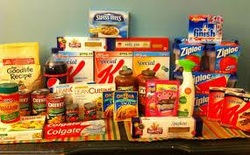
Most grocery store chains move their food purchases from suppliers to their own distribution centers and then to their retail stores. Throughout this process, there are many different points where companies make purchasing and inventory control decisions in order to ensure they are minimizing their inventory and shipping costs, stocking only the most popular brands, and selling through their inventory ahead of “best use by” dates.
Given all the guesswork involved in the process, it’s no surprise that these major grocery stores occasionally realize they bought more units of a certain product than they probably should have—whether it was too many boxes of Kellogg’s Corn Flakes or Nutella.
Other times, items become overstock because they go out-of-season, they get damaged at the warehouse, or the supplier re-designs the packaging and re-brands the goods.
However it happens, these extras become a wasted cost for the retailer and this cost must be offset by higher prices on the products we shoppers actually buy.
This is a problem for the grocery store and the consumer, right?
Right! And this is where grocery remarketers come in. These outlets offer to buy the excess or sometimes lightly damaged inventory from the big grocery stores and suppliers at rock-bottom prices.
The sellers love the deal because the remarketers enable them to get rid of excess inventory, thereby reducing their losses. The remarketers love the deal because they can then sell the cheaply bought excess inventory to shoppers like us for extremely low prices and still make a profit!
That’s a win-win-win.
 RSS Feed
RSS Feed